Mount Sutro’s Bombardier Butterflies
By Liam O’Brien
They blast by incredibly fast, zipping and zagging every which way. No, I’m not talking about the annual visit of the Blue Angels for Fleet Week. I’m talking about our skipper butterflies. I remember wondering if I’d ever learn them, back when this butterfly mania took hold of me. Years of frustration, mainly because they all look so damn similar and don’t sit still long enough for a novice to study them. But then one day the clouds parted and I’d cracked their code.
Once thought of as halfway between butterflies and moths, skippers are impish, entertaining, and maddening, all at once. (How’s that for anthropomorphism?) Now that summer has officially arrived on Mount Sutro, I’m dedicating this blog post to the three most common ones at the summit and in our fair city.
We have a total of six skipper species scampering about San Francisco County. (Bet you didn’t know that.) They are the Fiery (Hylephila phyleus), the Umber (Poanes melane) and the Common Checkered (Pyrgus communis). Less common are the seasonal Sandhill (Polites sabuleti), the Woodland (Ochlodes sylvanoides) and the Rural—a population that I discovered breeding out on Yerba Buena Island in 2009.
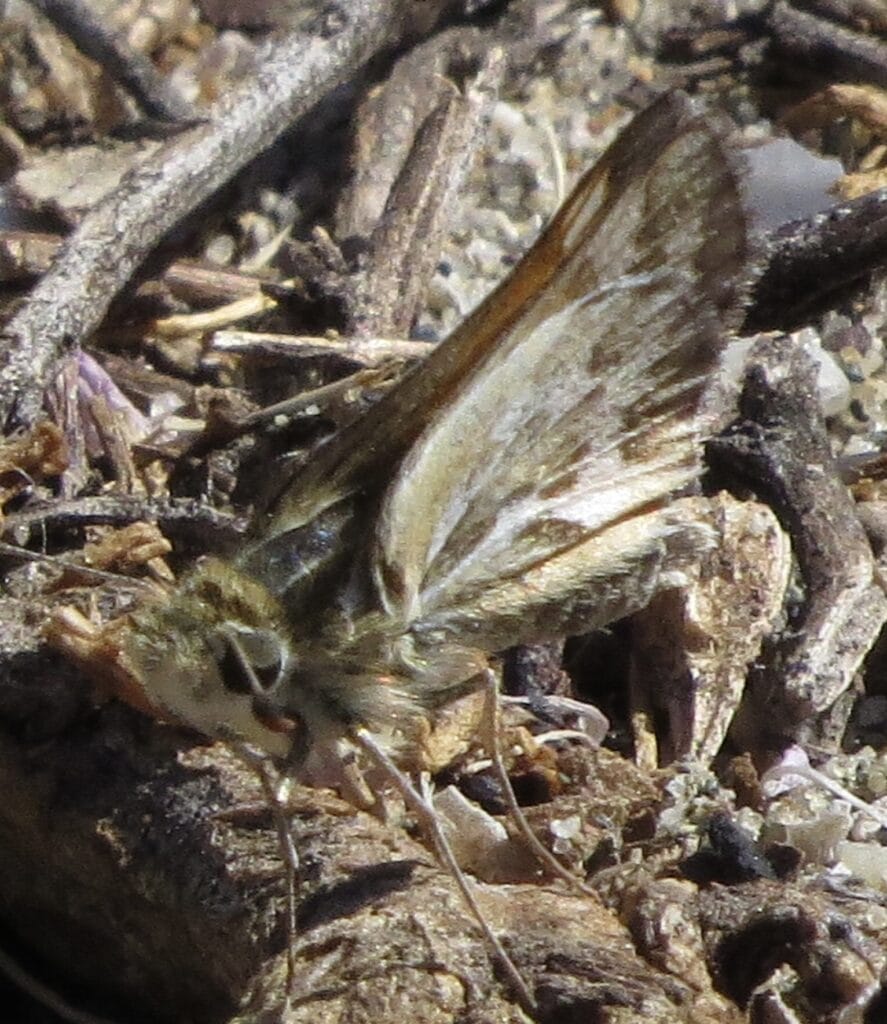
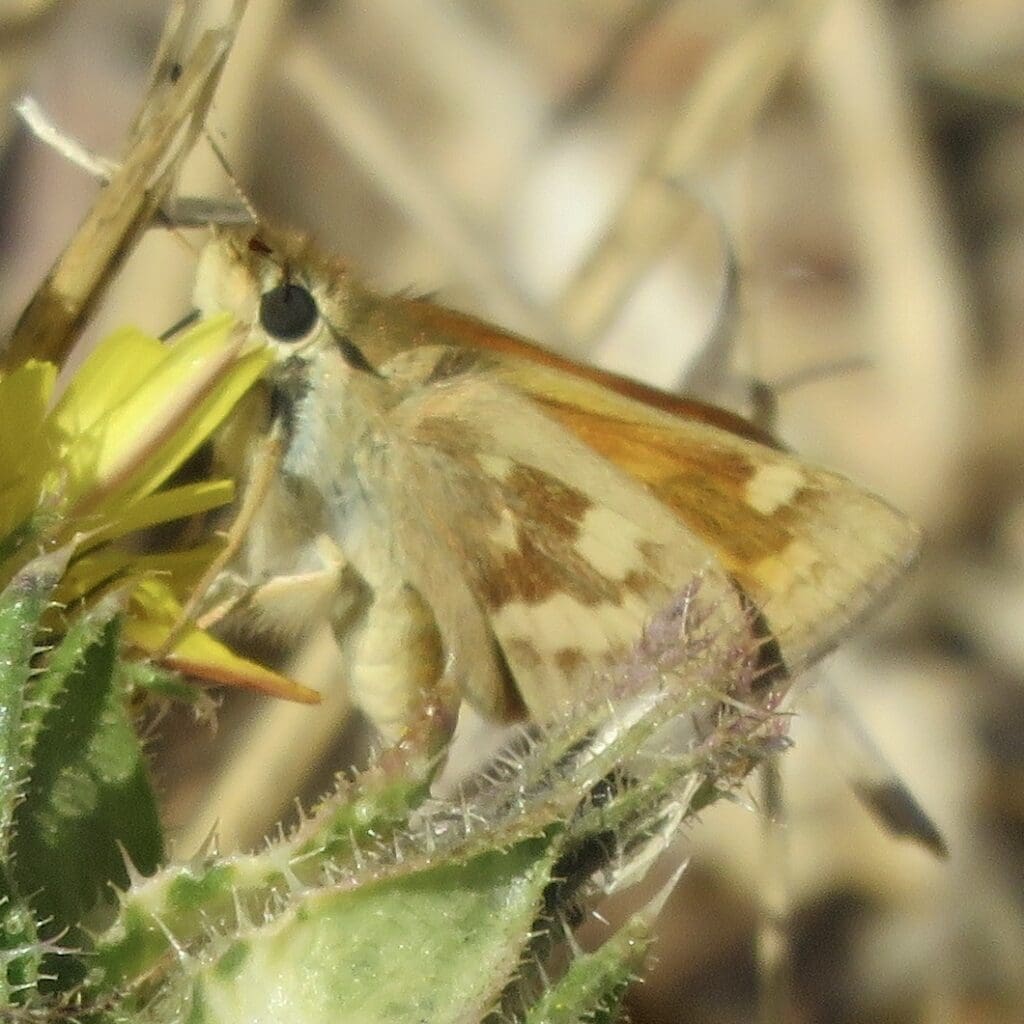
Skippers are a family of the order Lepidoptera (moths and butterflies) named the Hesperiidae. Being diurnal (day-flying), they are generally called butterflies. They were previously placed in a separate superfamily, Hesperiodea; however, most recent taxonomy places them in the superfamily Papilionoidea, the superfamily of butterflies, which taxonomically supports their description as butterflies. Did you get all of that?
The “skipper” name comes from their quick, darting flight habits. Most have antenna tips that are modified into narrow, hook-like projections. Moreover, skippers mostly lack the wing-coupling structure typical of moths. More than 3,500 species of skippers are recognized worldwide, with the greatest diversity in the neotropical regions of Central and South America.
Remember when you a kid and those little golden guys would blast about the family lawn? That was, and still is, the Fiery Skipper. I was somewhat surprised to see one up on Mount Sutro last season because one would not really consider it habitat. In San Francisco, it’s much more common on the Great Lawn. But there it was in August 2020, completing a trifecta of the ones we see the most in the city.
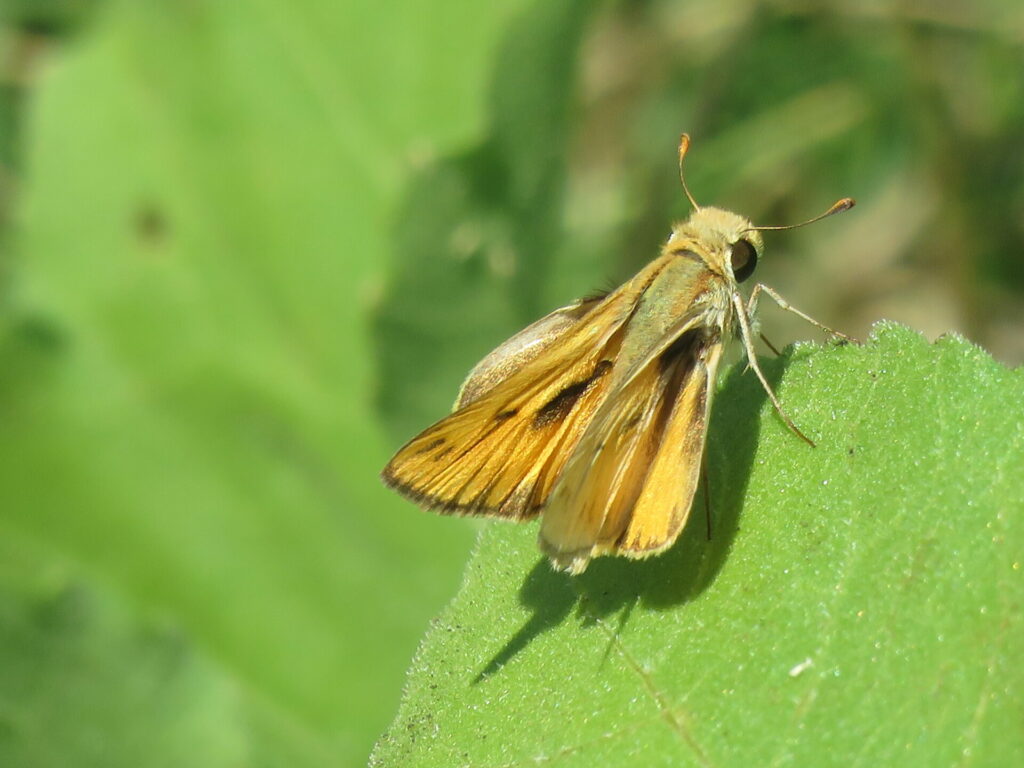
Umber Skippers abound on the Sutro summit. In fact, it was the most-seen butterfly in all of last year’s inventory. It can be observed in many places ranging from native open space to vacant lots and backyard gardens. Along with the Red Admiral (Vanessa atalanta), the Umber Skipper is a denizen of the dappled sunlight environment of the paths just below the summit. It can be seen primarily on blackberry vine blossoms. Identified by the rich, sable brown wings with vague yellow spots, they host primarily on Bermuda grass (Cynodon dactylon). I think they are the easiest species to learn when one is first attempting skipper identification.
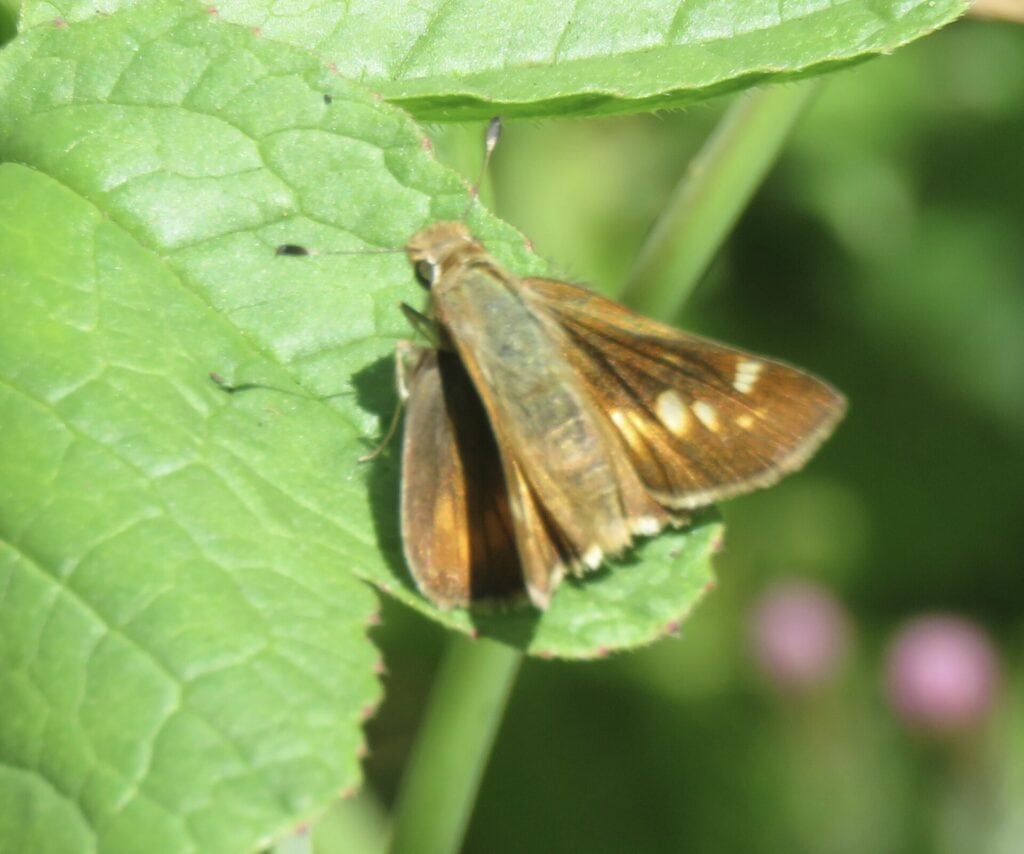
We now enter a subfamily—the Pyrginae—to discuss our third most common, the Common Checkered Skipper. The main difference between this species and the five others is that it sits with all four wings flat. The other five sit in what is commonly referred to as the”bombardier” position: forewings up, hind wings out, like mini jets sitting on the deck of an aircraft carrier.
There is a distinct white checkerboard pattern to the upper side of the Common Checkered Skipper’s wings, and it has blue hairs on their thorax. I got called once to solve a contentious argument between a builder and a neighbor who opposed the builder’s project. The neighbor claimed to have seen an endangered Mission Blue (which only flies on Twin Peaks in our city) and argued that the building couldn’t go up. Nice try: It was a Common Checkered-Skipper.
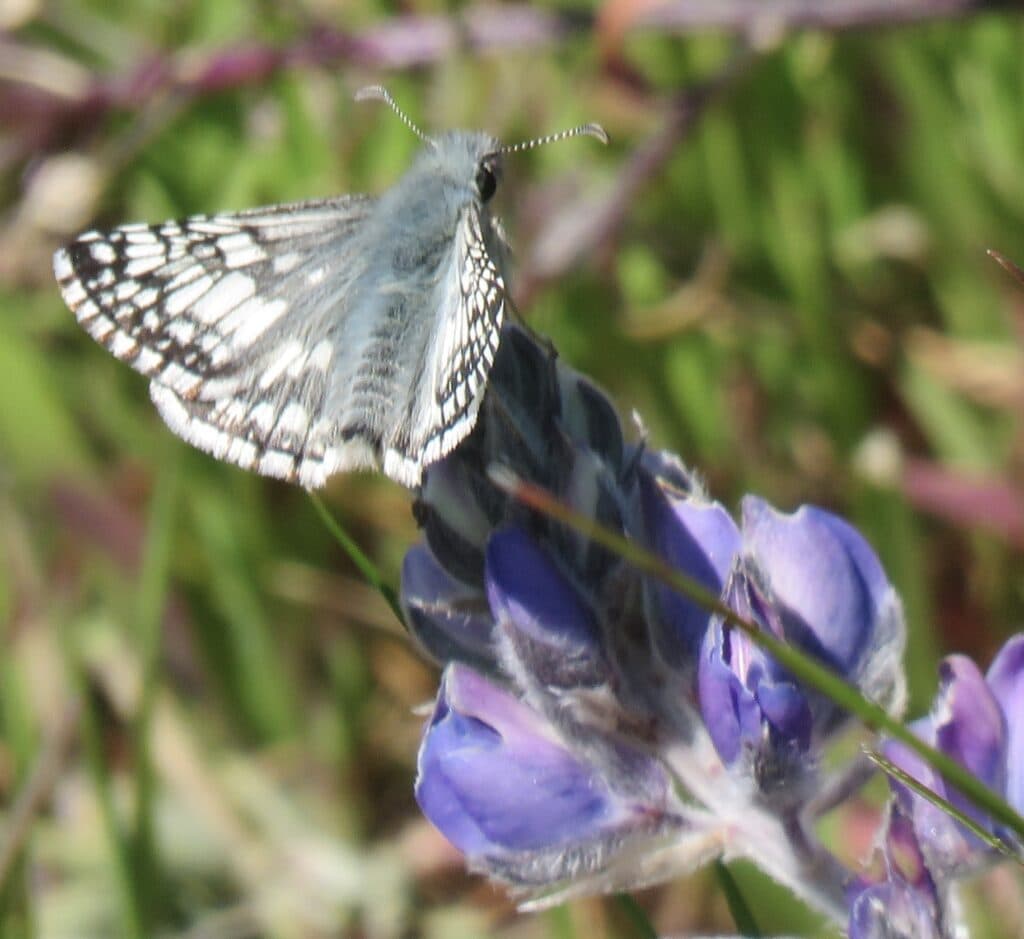
So don’t give up on trying to learn San Francisco’s skippers. You are mainly going to be dealing with these three—the Fiery, Umber, and Common Checkered Skippers—and then you can move onto the other three. They are normally a rather dismissed group of nature and I hope I’ve pulled back the curtain on them here. They always make me smile when they zip by, a delightful arrogance in their mesmerizing aerobatics.

Liam O’Brien is a San Francisco lepidopterist who conducts twice-monthly butterfly surveys on Mount Sutro as part of Golden Gate Bird Alliance’s wildlife monitoring for U.C.S.F.’s new Vegetation Management Plan. Read his previous post about butterflies on Mount Sutro here. His blog, THE FLYING PANSY, can be found on BAY NATURE‘s web site. Got questions for Liam? Email him at LIAMMAIL56@HOTMAIL.COM.
